JIUQUAN, Oct. 26 (Xinhua) -- China on Thursday launched the Shenzhou-17 manned spaceship, and the three astronauts aboard will be sent to stay in orbit for about six months on a space station mission.
The spaceship, atop a Long March-2F carrier rocket, blasted off at 11:14 a.m. Thursday (Beijing Time) from the Jiuquan Satellite Launch Center in northwest China, according to the China Manned Space Agency (CMSA).
About 10 minutes after the launch, the Shenzhou-17 spaceship separated from the rocket and entered its designated orbit. The crew members, consisting of Tang Hongbo, Tang Shengjie and Jiang Xinlin, are in good shape and the launch is a complete success, the CMSA said.
After entering orbit, the Shenzhou-17 spaceship will make a fast, automated rendezvous and docking with the space station combination. The Shenzhou-17 crew will rotate with the Shenzhou-16 crew in orbit.
The Shenzhou-17 crew has the youngest lineup since the construction of China's Tiangong space station started.
Tang Hongbo, born in 1975, is the mission commander and a veteran astronaut once launched into orbit on the Shenzhou-12 mission in June 2021. Tang Shengjie, born in 1989, is a new face and also the youngest astronaut to enter China's space station. Jiang Xinlin, born in 1988, is also a newcomer to space.
They will perform various in-orbit space science and application payload tests and experiments, Lin Xiqiang, deputy director of the CMSA, announced at a press conference on Wednesday.
They will carry out extravehicular activities, install extravehicular payloads and conduct space station maintenance and other tasks, Lin said.
The Shenzhou-17 astronauts will do extravehicular experimental maintenance for the first time, which is a very challenging task, Lin added.
With space debris increasing, their impact on long-term operating spacecraft is inevitable, Lin said. "Through preliminary inspections, we have found that the solar wings of the space station had been hit by tiny space particles several times, causing minor damages."
"Of course, we already took this into consideration in the design stage. At present, all functionality and performance indicators of the space station meet requirements," he added.
The astronauts will also continue to assess the functioning and performance of the space station and test the coordination and compatibility of ground support centers in performing space station operation and management tasks, to further enhance the operating efficiency and fault correction capability of the space station, he said. ■
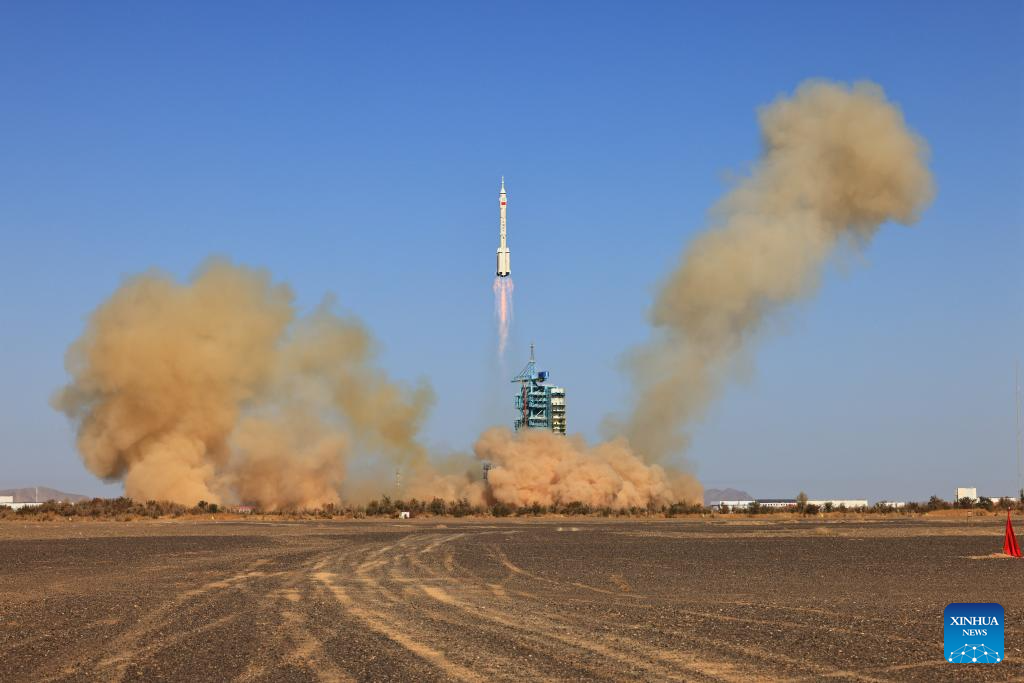
The Shenzhou-17 manned spaceship, atop a Long March-2F carrier rocket, blasts off from the Jiuquan Satellite Launch Center in northwest China on Oct. 26, 2023. (Xinhua/Li Gang)
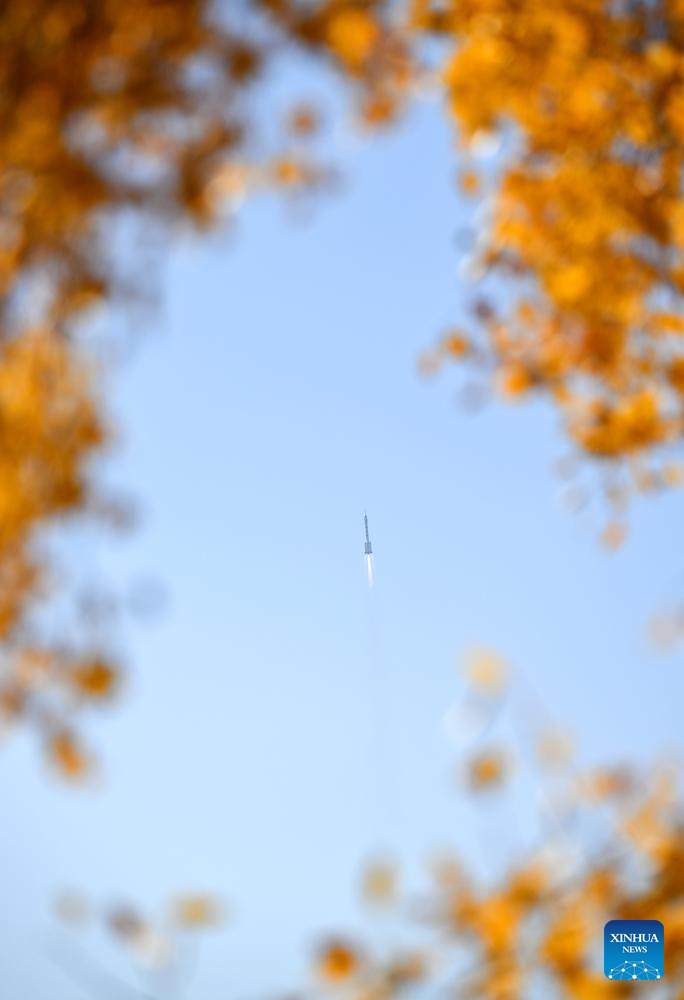
The Shenzhou-17 manned spaceship, atop a Long March-2F carrier rocket, blasts off from the Jiuquan Satellite Launch Center in northwest China on Oct. 26, 2023. (Xinhua/Lian Zhen)
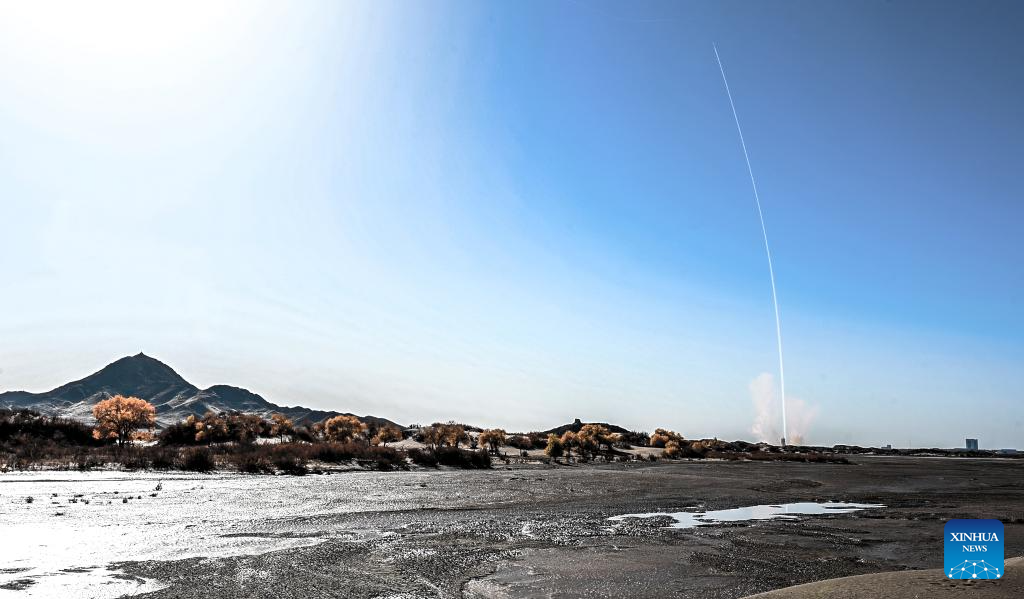
This photomontage taken on Oct. 26, 2023 shows the Shenzhou-17 manned spaceship, atop a Long March-2F carrier rocket, blasting off from the Jiuquan Satellite Launch Center in northwest China. (Xinhua/Liu Yide)
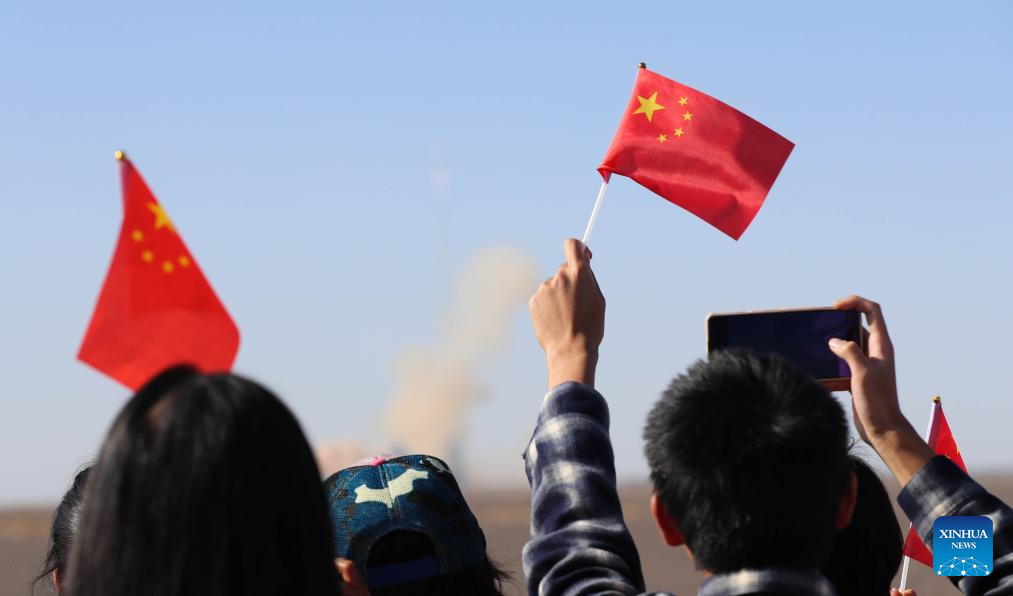
People watch the launch of the Shenzhou-17 manned spaceship by the Jiuquan Satellite Launch Center in northwest China on Oct. 26, 2023. (Xinhua/Wang Kaiyan)
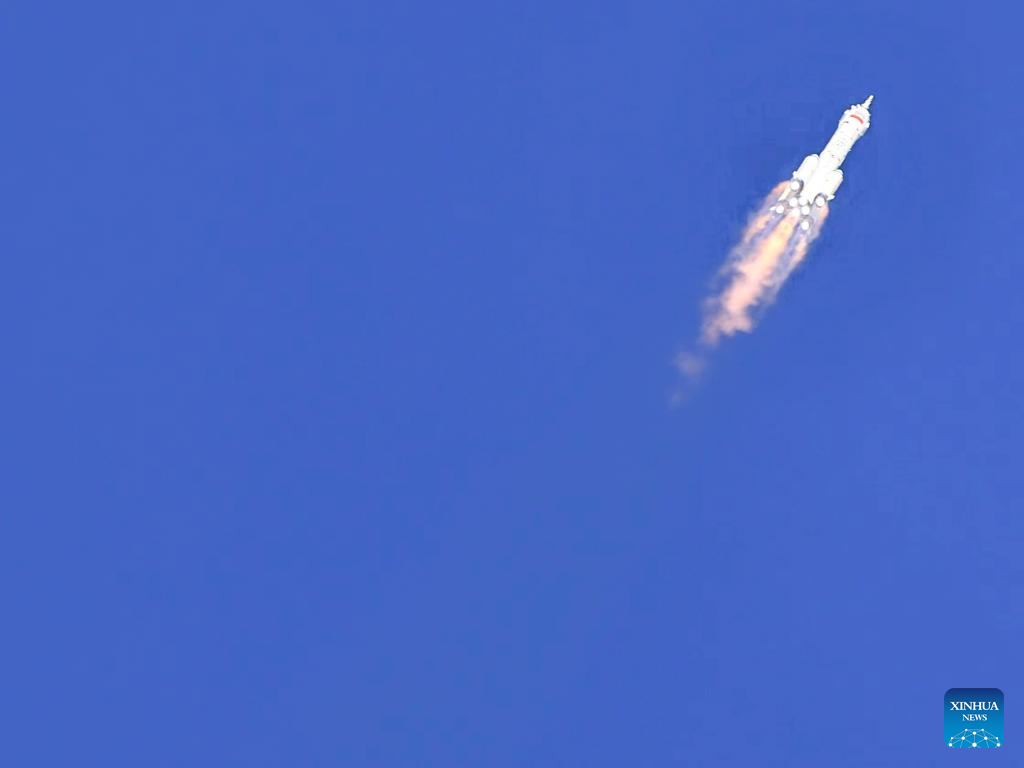
The Shenzhou-17 manned spaceship, atop a Long March-2F carrier rocket, blasts off from the Jiuquan Satellite Launch Center in northwest China on Oct. 26, 2023. (Xinhua/Li Gang)
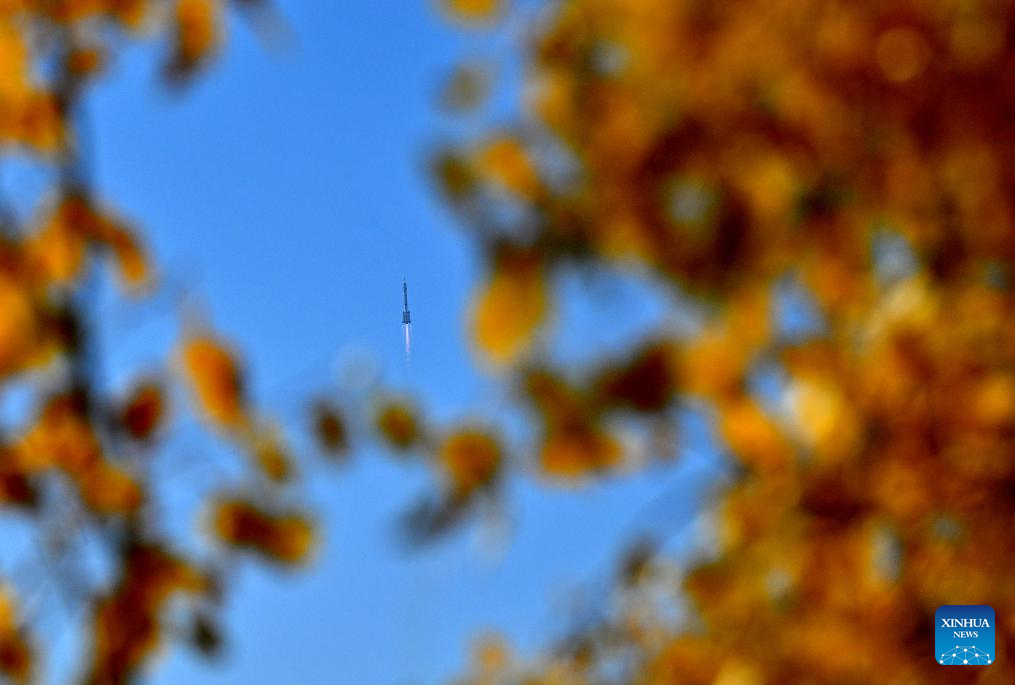
The Shenzhou-17 manned spaceship, atop a Long March-2F carrier rocket, blasts off from the Jiuquan Satellite Launch Center in northwest China on Oct. 26, 2023. (Xinhua/Ren Junchuan)
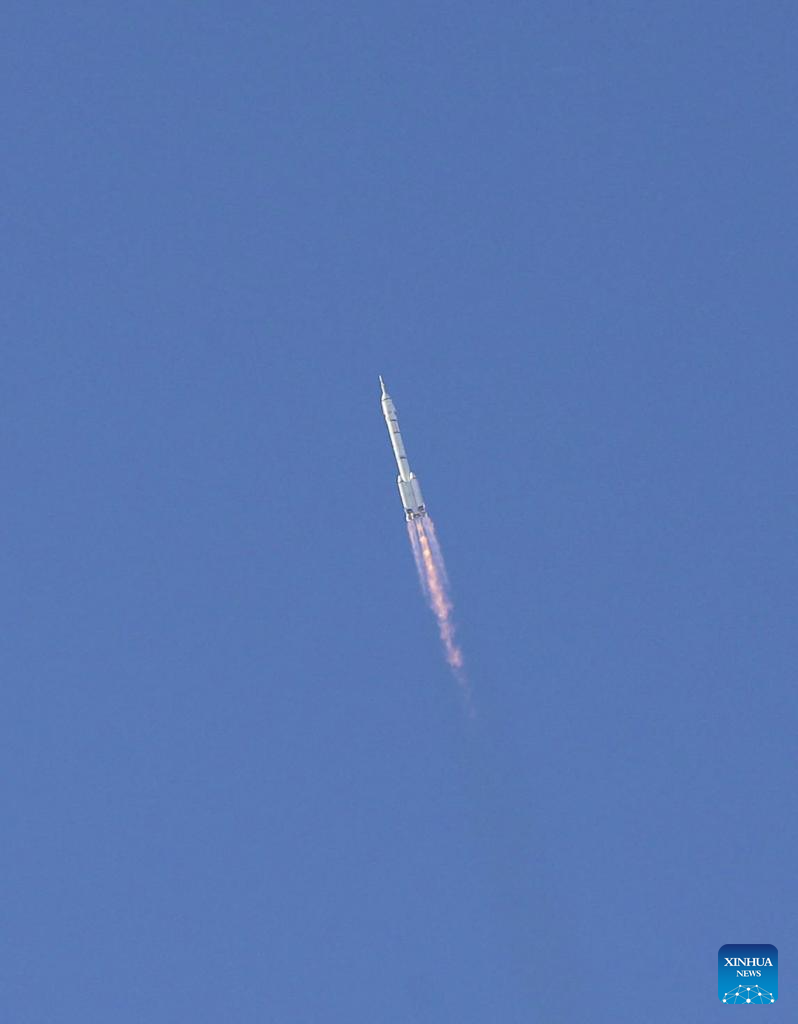
The Shenzhou-17 manned spaceship, atop a Long March-2F carrier rocket, blasts off from the Jiuquan Satellite Launch Center in northwest China on Oct. 26, 2023. (Xinhua/Wang Kaiyan)
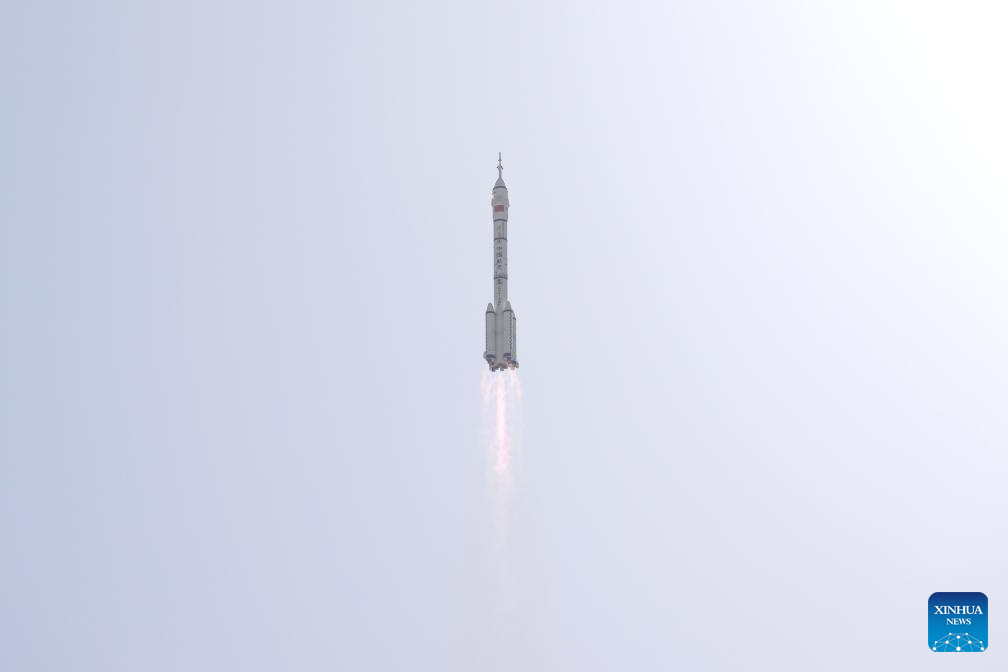
The Shenzhou-17 manned spaceship, atop a Long March-2F carrier rocket, blasts off from the Jiuquan Satellite Launch Center in northwest China on Oct. 26, 2023. (Xinhua/Li Zhipeng)

The Shenzhou-17 manned spaceship, atop a Long March-2F carrier rocket, blasts off from the Jiuquan Satellite Launch Center in northwest China on Oct. 26, 2023. (Xinhua/Liu Jinhai)
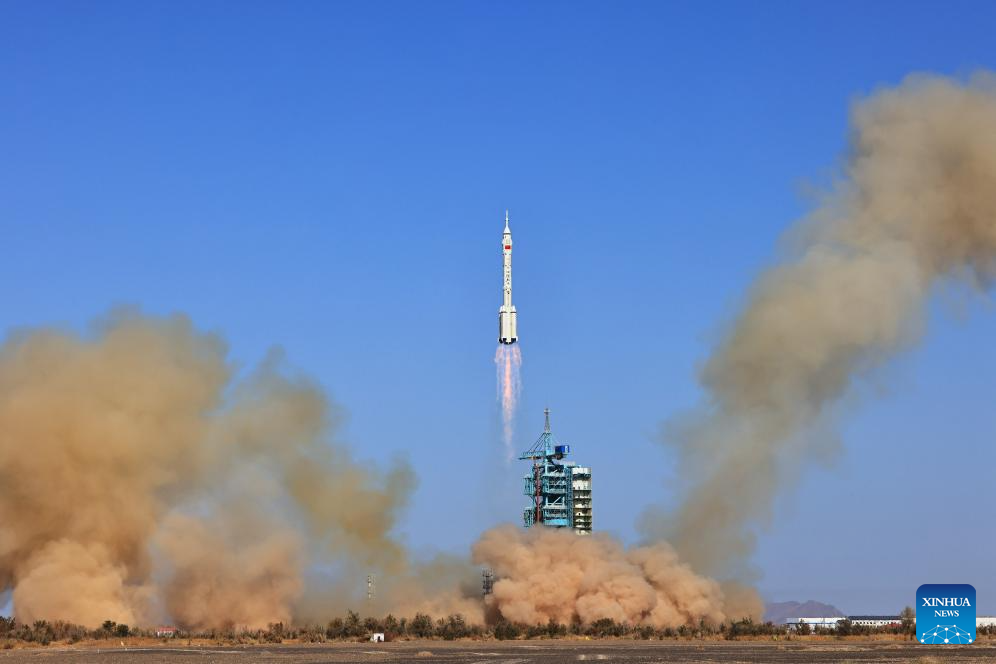
The Shenzhou-17 manned spaceship, atop a Long March-2F carrier rocket, blasts off from the Jiuquan Satellite Launch Center in northwest China on Oct. 26, 2023. (Xinhua/Li Gang)

This photomontage taken on Oct. 26, 2023 shows the Shenzhou-17 manned spaceship, atop a Long March-2F carrier rocket, blasting off from the Jiuquan Satellite Launch Center in northwest China. (Xinhua/Lian Zhen)
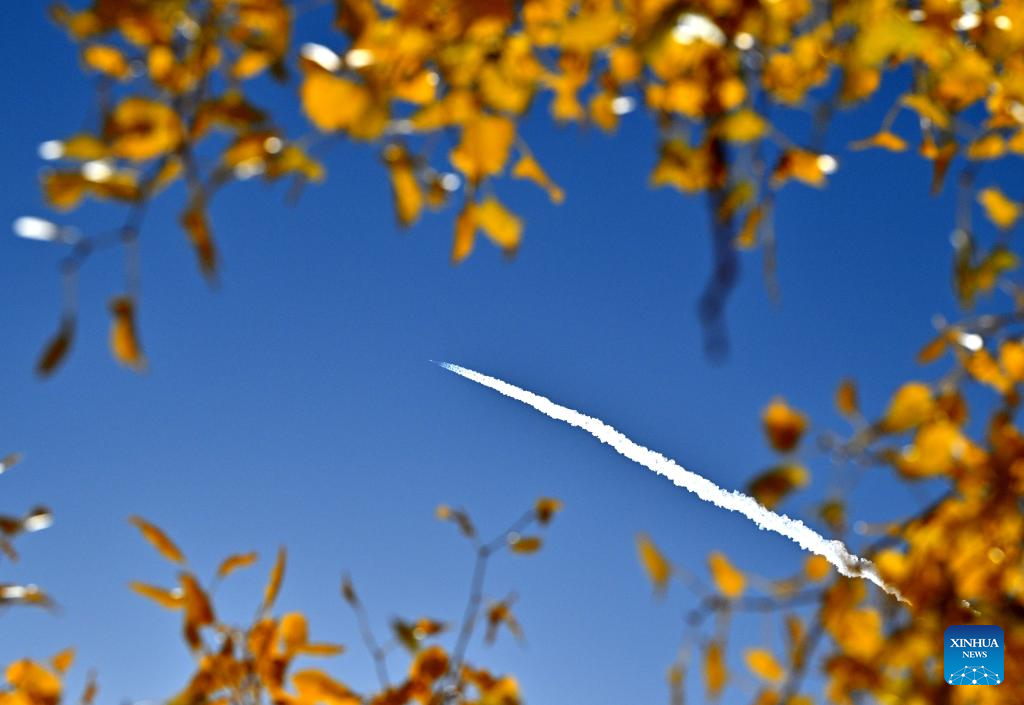
The Shenzhou-17 manned spaceship, atop a Long March-2F carrier rocket, blasts off from the Jiuquan Satellite Launch Center in northwest China on Oct. 26, 2023. (Xinhua/Ren Junchuan)
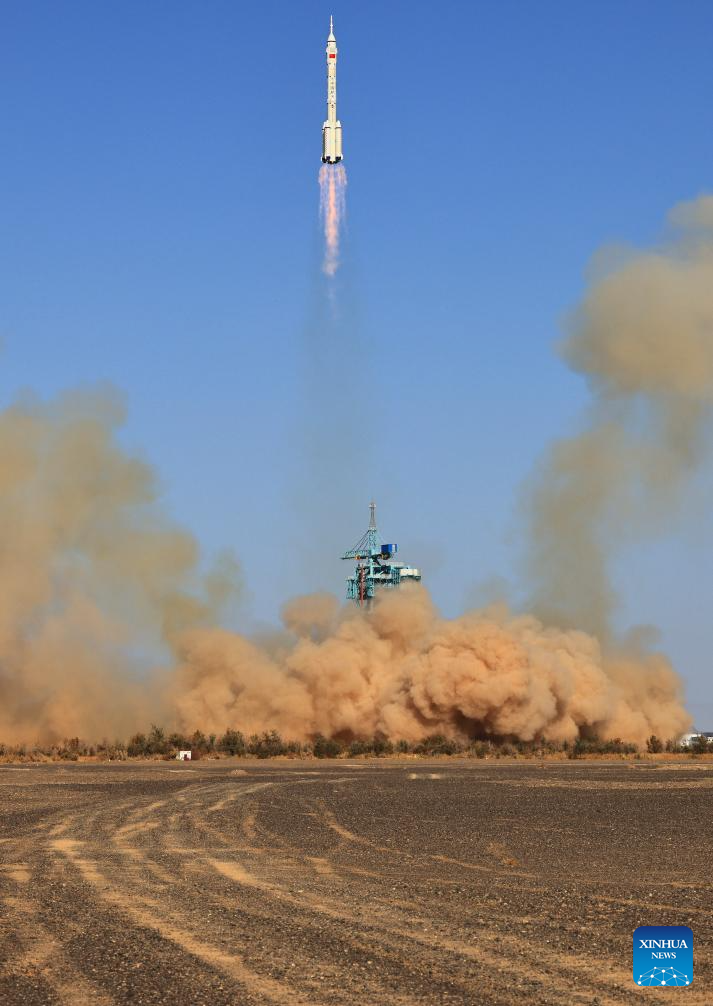
The Shenzhou-17 manned spaceship, atop a Long March-2F carrier rocket, blasts off from the Jiuquan Satellite Launch Center in northwest China on Oct. 26, 2023. (Xinhua/Li Gang)

The Shenzhou-17 manned spaceship, atop a Long March-2F carrier rocket, blasts off from the Jiuquan Satellite Launch Center in northwest China on Oct. 26, 2023. (Xinhua/Li Gang)
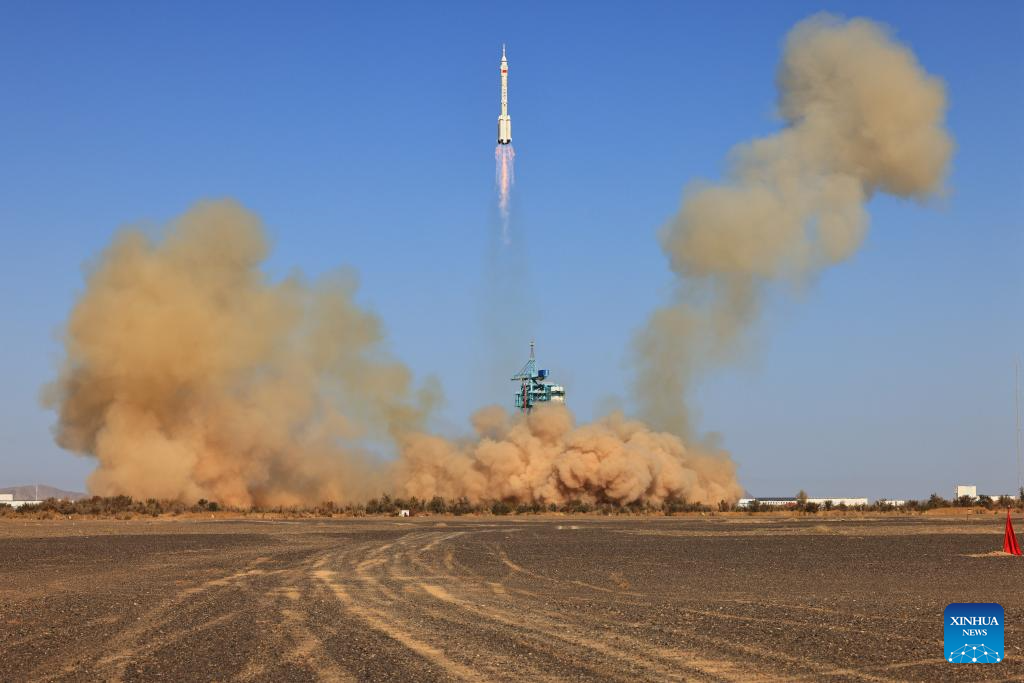
The Shenzhou-17 manned spaceship, atop a Long March-2F carrier rocket, blasts off from the Jiuquan Satellite Launch Center in northwest China on Oct. 26, 2023. (Xinhua/Li Gang)
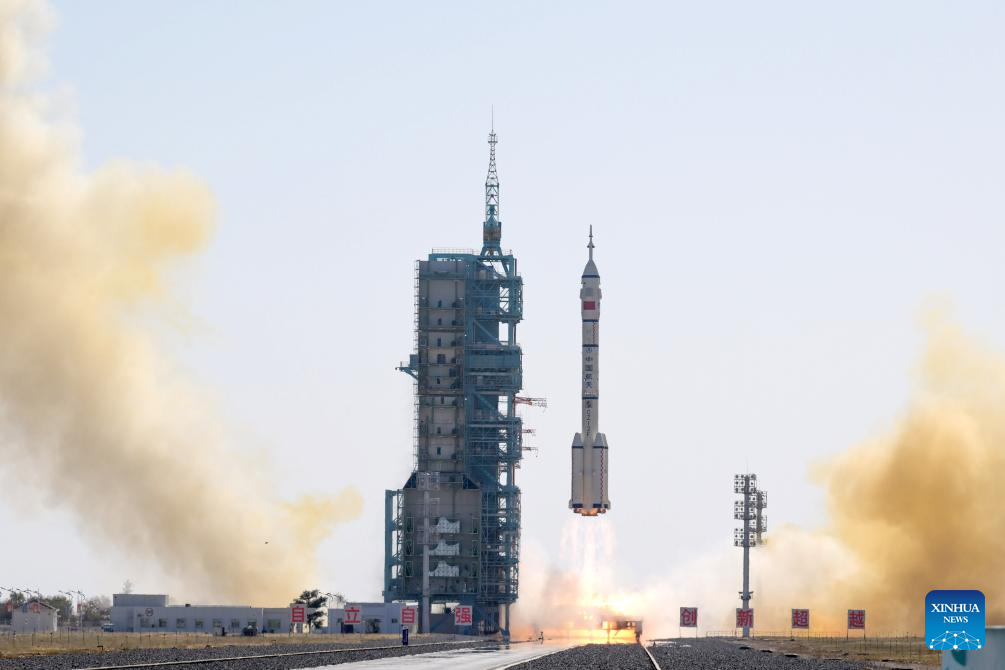
The Shenzhou-17 manned spaceship, atop a Long March-2F carrier rocket, blasts off from the Jiuquan Satellite Launch Center in northwest China on Oct. 26, 2023. (Xinhua/Li Zhipeng)

The Shenzhou-17 manned spaceship, atop a Long March-2F carrier rocket, blasts off from the Jiuquan Satellite Launch Center in northwest China on Oct. 26, 2023. (Xinhua/Liu Jinhai)
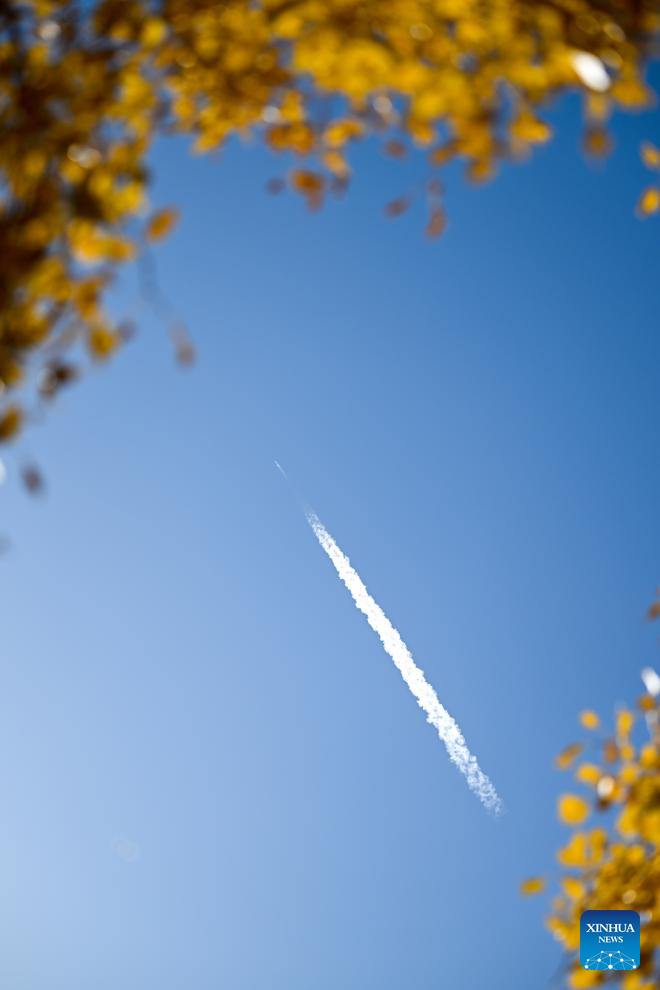
The Shenzhou-17 manned spaceship, atop a Long March-2F carrier rocket, blasts off from the Jiuquan Satellite Launch Center in northwest China on Oct. 26, 2023. (Xinhua/Lian Zhen)

The Shenzhou-17 manned spaceship, atop a Long March-2F carrier rocket, blasts off from the Jiuquan Satellite Launch Center in northwest China on Oct. 26, 2023. (Xinhua/Ren Junchuan)
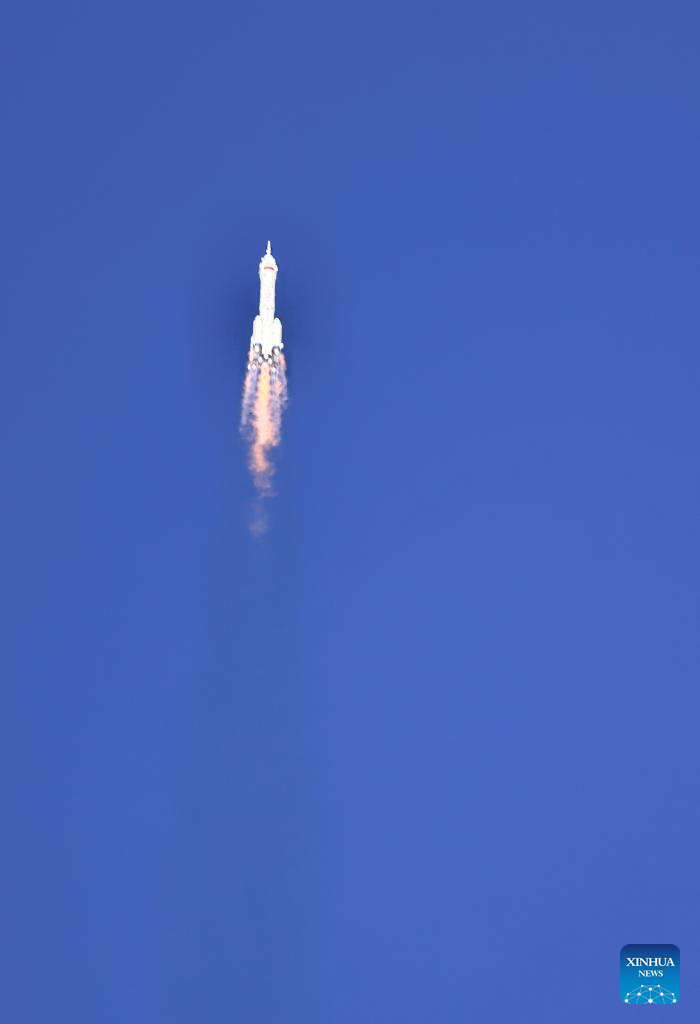
The Shenzhou-17 manned spaceship, atop a Long March-2F carrier rocket, blasts off from the Jiuquan Satellite Launch Center in northwest China on Oct. 26, 2023. (Xinhua/Li Gang)

The Shenzhou-17 manned spaceship, atop a Long March-2F carrier rocket, blasts off from the Jiuquan Satellite Launch Center in northwest China on Oct. 26, 2023. (Xinhua/Li Gang)
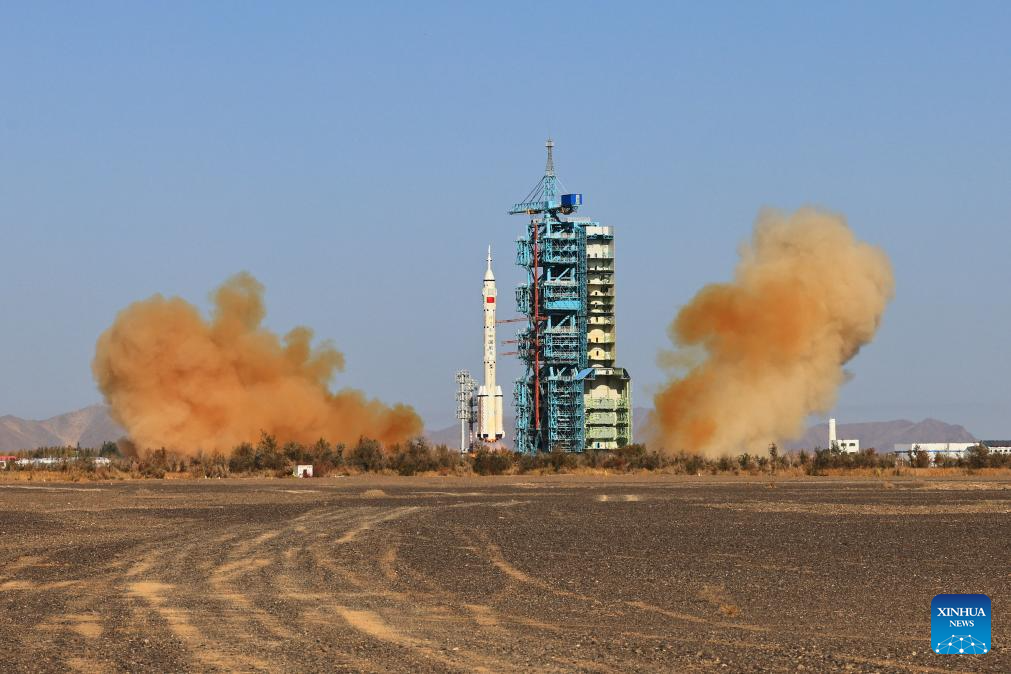
The Shenzhou-17 manned spaceship, atop a Long March-2F carrier rocket, blasts off from the Jiuquan Satellite Launch Center in northwest China on Oct. 26, 2023. (Xinhua/Li Gang)

The Shenzhou-17 manned spaceship, atop a Long March-2F carrier rocket, blasts off from the Jiuquan Satellite Launch Center in northwest China on Oct. 26, 2023. (Xinhua/Lian Zhen)
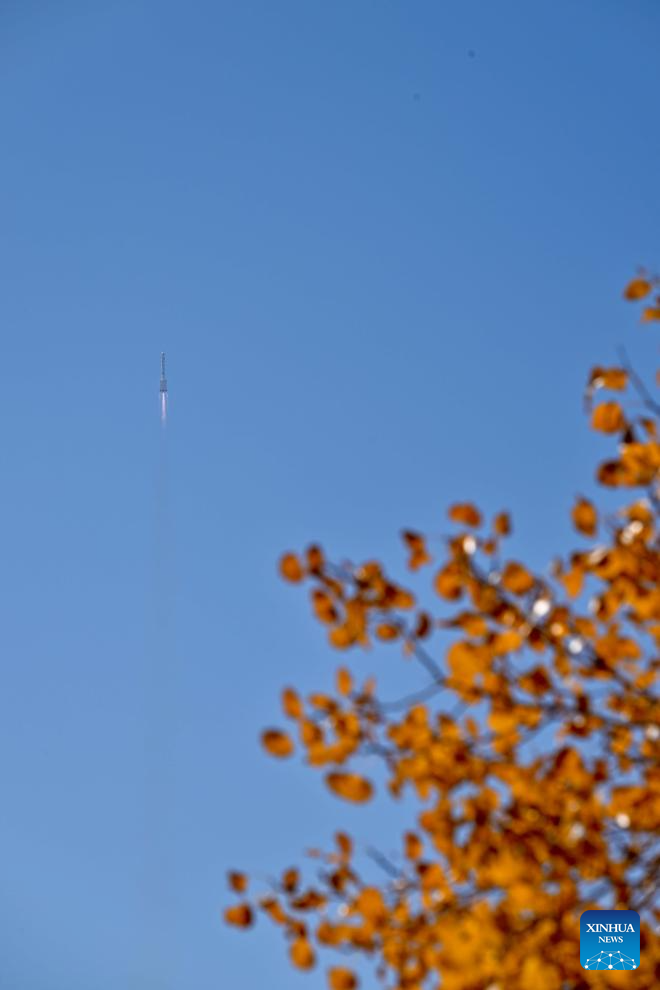
The Shenzhou-17 manned spaceship, atop a Long March-2F carrier rocket, blasts off from the Jiuquan Satellite Launch Center in northwest China on Oct. 26, 2023. (Xinhua/Liu Jinhai)

The Shenzhou-17 manned spaceship, atop a Long March-2F carrier rocket, blasts off from the Jiuquan Satellite Launch Center in northwest China on Oct. 26, 2023. (Xinhua/Liu Jinhai)
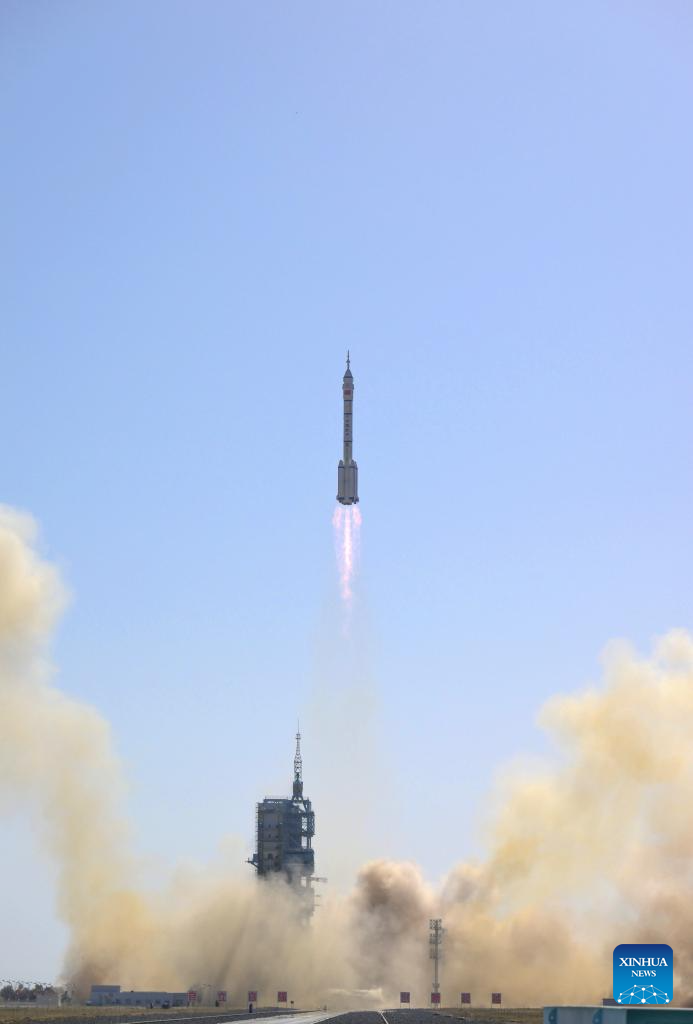
The Shenzhou-17 manned spaceship, atop a Long March-2F carrier rocket, blasts off from the Jiuquan Satellite Launch Center in northwest China on Oct. 26, 2023. (Xinhua/Li Zhipeng)
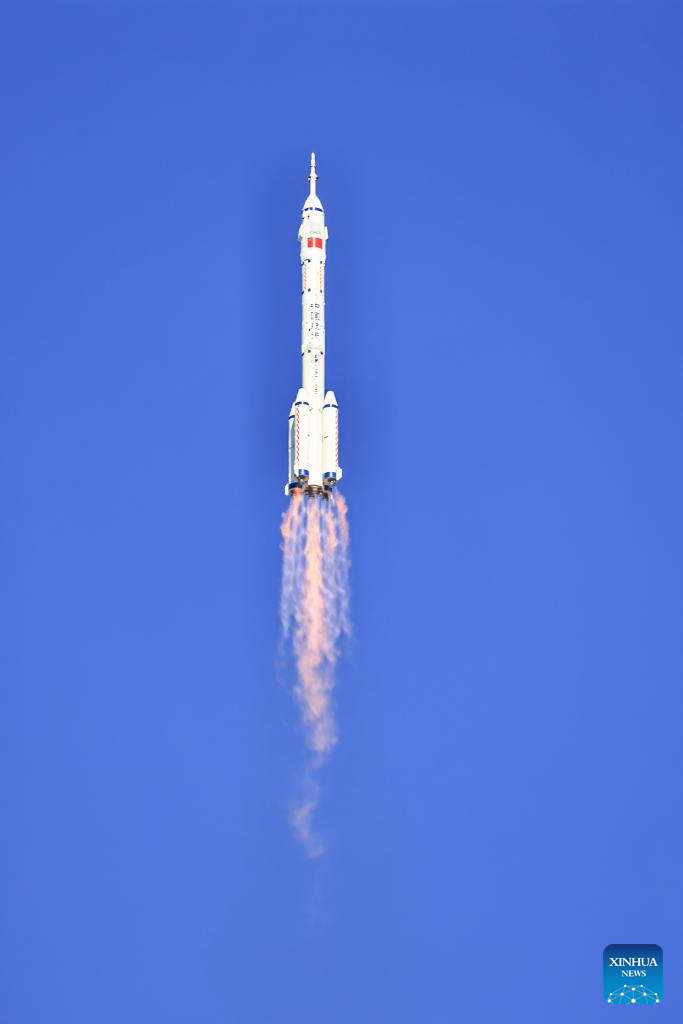
The Shenzhou-17 manned spaceship, atop a Long March-2F carrier rocket, blasts off from the Jiuquan Satellite Launch Center in northwest China on Oct. 26, 2023.(Xinhua/Li Gang)
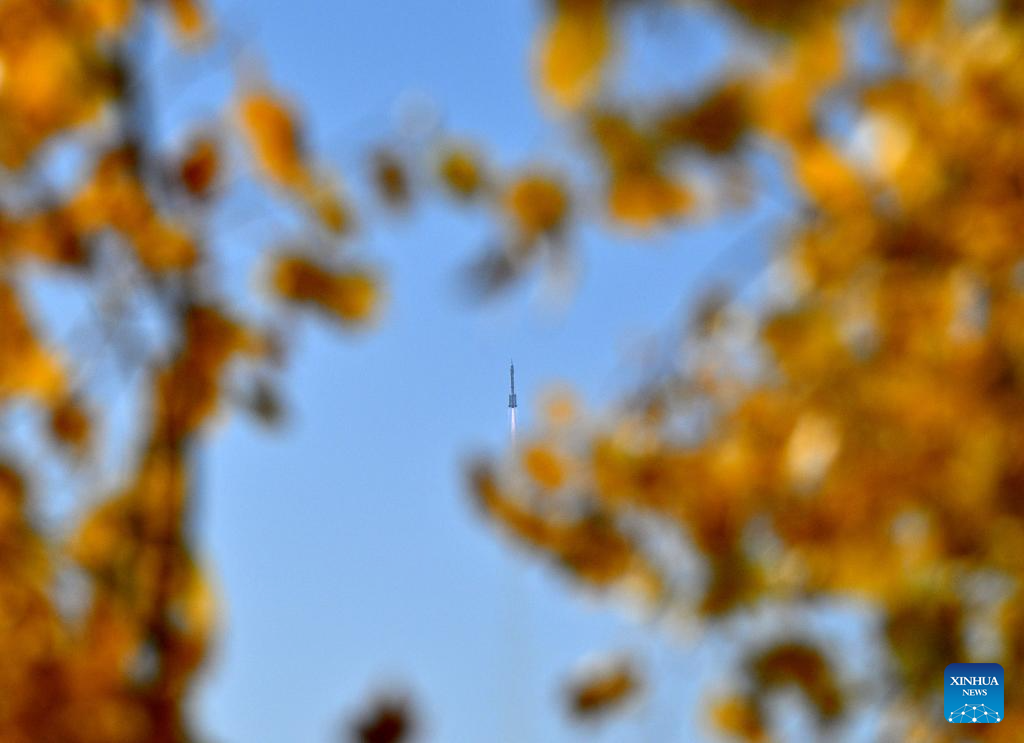
The Shenzhou-17 manned spaceship, atop a Long March-2F carrier rocket, blasts off from the Jiuquan Satellite Launch Center in northwest China on Oct. 26, 2023. (Xinhua/Ren Junchuan)



